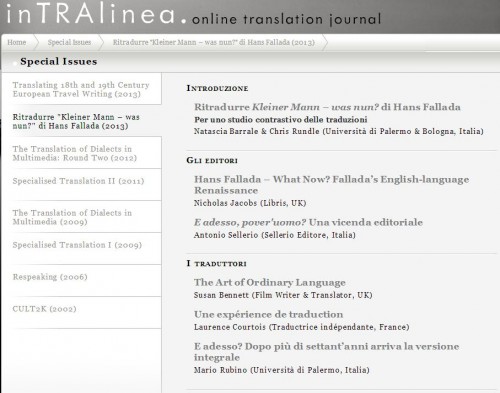30/11/2013
Retraduire Kleiner Mann – was nun? de Hans Fallada
Nous signalons un site italien, consacré à la traduction:
inTRAlinea. on line translation journal.
Un numéro spécial, paru en 2013 et qui s'intitule :
"Ritradurre Kleiner Mann – was nun? di Hans Fallada" devrait sans doute intéresser les visiteurs de ce site.
Disponible à l'adresse suivante :
http://www.intralinea.org/specials/fallada
17:18 Publié dans Actualité, Bibliographie, Textes sur Hans Fallada | Lien permanent | Commentaires (0)




